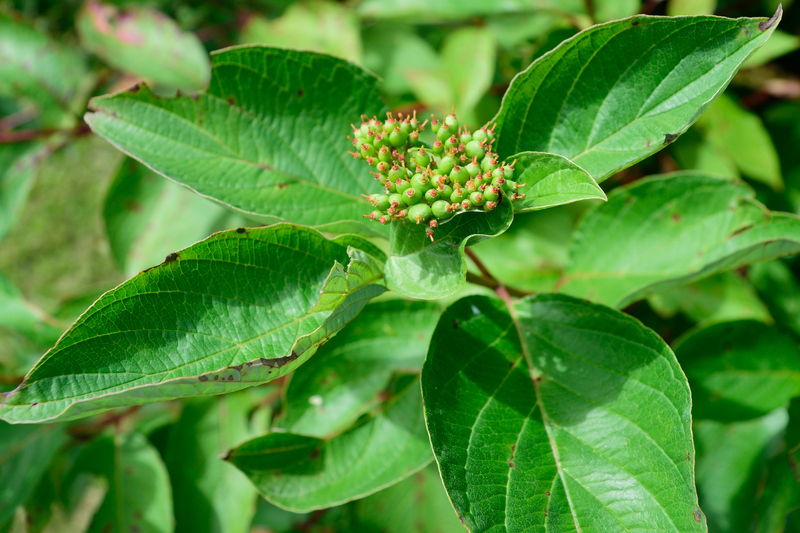Lush Lawns Made Simple: Beginner Tips for Vibrant Grass
Dreaming of a lush green lawn that instantly boosts your home's curb appeal? Whether you're a novice or just want to improve your lawn care approach, achieving vibrant grass isn't as complicated as you might think. With the right information and tools, anyone can grow a healthy, beautiful yard. This guide offers beginner tips and proven methods for lush lawns, ensuring your grass thrives throughout the seasons.
Why a Vibrant Lawn Matters
A vibrant lawn is more than a pretty sight. Healthy grass enhances your home's value, offers a cool place for relaxation, improves air quality, and acts as a natural filter for rainwater. Investing in your lawn's health pays dividends for your family, pets, and the environment.
The Basics: Understanding Your Lawn
- Know Your Grass Type: Not all grass is created equal. Cool-season grasses (like fescue, ryegrass, and bluegrass) thrive in northern climates, while warm-season grasses (like Bermuda, St. Augustine, and zoysia) suit southern regions.
- Assess Your Yard's Conditions: Take note of sun exposure, soil type, drainage, and foot traffic. These elements influence the care routines and grass seed selection.
- Understand Your Goals: Do you want a hands-off, low-maintenance space, or a perfectly manicured green carpet? Your lifestyle and willingness to invest time will shape your lawn care plan.

Soil: The Foundation of Lush Lawns
Healthy soil is essential for vibrant grass. Start with a simple soil test to measure pH and nutrient levels. Most grasses flourish in slightly acidic soil (pH 6.0-7.0). Soil tests are available at garden centers and extension offices, or you can order kits online.
Steps for Preparing Great Lawn Soil
- Amend as Needed: Add lime to raise pH, sulfur to lower it, and mix in compost for organic matter. Fertilizer will address nutrient deficiencies.
- Loosen Compacted Soil: Aerate your lawn in the spring or fall. Aeration allows water, oxygen, and nutrients to penetrate the roots for thicker, lusher grass.
- Improve Drainage: If your yard is prone to standing water, consider adding organic material or creating gentle slopes to direct runoff away from your grass.
Essential Steps to Planting or Reviving Your Lawn
Whether starting from scratch or overseeding an existing lawn, following the right steps is crucial for healthy, vibrant grass.
Seed or Sod: Making the Right Choice
- Grass Seed: Cost-effective and available in many varieties, but requires patience and regular watering for establishment.
- Sod: Delivers instant lushness and is ideal for fast results, though it's more expensive and requires meticulous soil preparation.
Seeding Like a Pro
- Choose Quality Seed: Read labels for pure, weed-free blends tailored to your climate and usage.
- Even Spreading: Use a broadcast spreader for uniform coverage. Avoid spreading seeds too thick or too thin.
- Light Covering: Rake seeds lightly into the soil and mulch with straw to retain moisture.
- Frequent Watering: Keep the top inch of soil moist until seedlings establish.
Installing Sod for Instant Results
- Soil Preparation: Till and level the soil, removing rocks and debris.
- Lay Sod Quickly: Don't let it dry out. Stagger seams like bricks and firmly press down for root contact.
- Water Immediately: Saturate the sod within 30 minutes of installation and keep it consistently moist for the first two weeks.
Watering Wisely: The Key to Green Lawns
Overwatering and underwatering are common beginner mistakes when caring for lush lawns. Proper watering encourages deep roots, making your grass resilient and stress-tolerant.
Tips for Effective Lawn Watering
- Water Deep, Not Often: Aim for 1-1.5 inches of water per week, including rainfall. Deep watering trains roots to grow downward.
- Morning is Best: Early morning watering minimizes evaporation and prevents disease. Avoid evening watering, which fosters fungal growth.
- Let the Lawn Tell You: Grass blades will fold or leave footprints behind when thirsty. Watch for these natural signs before reaching for the hose.
- Use a Rain Gauge or Tuna Can: These simple tools help measure how much water your lawn receives. Sprinkle enough water so an empty can collects an inch per session.
Feeding Your Grass: Fertilizer Fundamentals
Regular feeding is vital for lush, vibrant grass. Lawns need essential nutrients--nitrogen, phosphorus, and potassium--along with micronutrients for robust growth.
- Select the Right Fertilizer: Look for numbers on the bag, such as 20-10-10, indicating the ratio of N-P-K (nitrogen-phosphorus-potassium).
- Time it Right: Cool-season grasses benefit from feeding in spring and late summer; warm-season grasses thrive with applications from spring to midsummer.
- Don't Overdo It: Too much fertilizer can burn your grass and harm the environment. Follow label instructions carefully.
- Organic Options: Consider organic fertilizers like compost, bone meal, or corn gluten meal for a sustainable, long-term approach.
The Secret to Even Fertilization
Invest in a spreader--drop or broadcast models distribute fertilizer evenly, reducing the risk of patchy color and chemical burns.
Mowing Matters: Best Practices for Beginner Lawn Care
Correct mowing is often overlooked, but it's one of the simplest ways to enhance lush lawn appearance and grass health.
Smart Mowing Habits
- Raise Your Blade: Avoid cutting more than one-third of the grass height at a time. Taller grass shades roots, blocks weeds, and holds moisture.
- Keep Blades Sharp: Dull blades rip rather than cut, leading to jagged, brown tips and vulnerability to disease.
- Change Your Pattern: Alter your mowing direction each time to prevent grass from leaning and soil compaction.
- Leave Clippings Behind: "Grasscycling" returns valuable nutrients to the soil and promotes lively, green growth.
Controlling Weeds, Pests, and Diseases
Pest and weed control is crucial if you want a lush, healthy lawn. A thick, well-maintained sward naturally shades out most weeds, but sometimes intervention is necessary.
Weed Management Tips
- Identify & Treat: Learn to distinguish common lawn weeds. Spot-treat with herbicide only where needed, rather than blanket-spraying.
- Preventative Care: A dense, fertilized, and properly watered lawn will resist most weed invasions naturally.
- Hand Pulling: For small lawns, this is effective and environmentally friendly, especially after rain when soil is soft.
Dealing with Lawn Pests
- Look for Symptoms: Brown patches, bite marks, or sudden die-off can indicate insects or grubs.
- Diagnose Correctly: Not all brown patches are caused by pests--overwatering, diseases, or pet urine can also be culprits.
- Choose the Right Treatment: Always select products labeled for your specific grass and pest problem. Use integrated pest management (IPM) principles to minimize chemicals whenever possible.
Seasonal Lawn Care: Keeping Grass Vibrant Year-Round
Consistent seasonal care is key for healthy, vibrant grass. Here's a quick rundown for every season:
- Spring: Rake debris, aerate, apply pre-emergent weed control, fertilize, and overseed if needed.
- Summer: Mow high, water deeply but infrequently, and watch for signs of heat or drought stress.
- Fall: Aerate again, feed cool-season grasses, remove leaves, and repair thin or bare spots with overseeding.
- Winter: Avoid heavy traffic on frosty lawns and clear debris. Plan soil tests or lawn improvements for spring.
Lawn Care Tools Every Beginner Needs
Having the right tools makes lawn care easier and more effective. Here are the essentials for lush lawns:
- Lawn Mower: Choose one right for your yard size--manual for tiny spaces, electric or gas for medium-to-large lawns.
- Watering Equipment: Hoses, sprinklers, and timers ensure consistent moisture during dry spells.
- Spreader: For even application of seed and fertilizer.
- Soil Tester: Essential for monitoring pH and nutrient levels.
- Aerator: Core or spike aerators combat soil compaction.
- Rake: For removing leaves, grass clippings, and prepping soil.
Quick Troubleshooting for Common Lawn Problems
Even the best-laid plans sometimes go awry. Here are solutions for frequent issues:
- Brown Patches: Investigate watering habits, mower blades, and possible pest or disease problems.
- Thin or Bare Spots: Overseed in spring or fall for cool-season grasses, or in late spring for warm-season types.
- Yellowing Grass: Could be signs of fertilizer burn, compaction, iron deficiency, or poor drainage.
- Excessive Weeds: Revisit mowing, fertilizing, and overseeding routines for a denser lawn that crowds weeds out naturally.

Expert Tips for That Extra Lush Look
- Topdress Annually: A thin layer of compost or topsoil improves soil health and boosts grass vitality.
- Edge Your Lawn: Clean edges along sidewalks and beds create a neat, professional appearance.
- Mulch Grass Clippings: Leave them where they fall for a free, organic fertilizer boost.
- Adjust for Shade: If you have shaded areas, choose a grass blend that tolerates low light and mow slightly higher to maximize photosynthesis.
Inspiring Your Lush Lawn Journey
Caring for lush lawns doesn't require a degree in horticulture. Anyone can succeed by following the time-tested principles outlined above.
Start simple--test your soil, water wisely, mow properly, and feed as needed. Monitor your lawn's needs with every season, address small issues quickly, and don't hesitate to ask local experts for advice on vibrant grass strategies in your region. Soon, you'll be rewarded with a lush, green oasis you can be proud of.
Remember, the journey to a beautiful lawn is as rewarding as the destination. Consistency, observation, and a little patience are your best tools for lawn success.